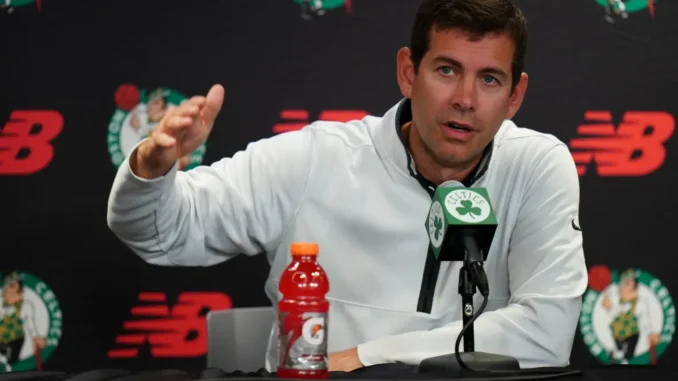
Before the Boston Celtics clinched their NBA championship, Brad Stevens, a key figure in the team’s management, intervened to halt potential trades involving several superstars. Known for his strategic acumen and vision for team cohesion, Stevens believed that these trades, despite involving high-profile players, might disrupt the team’s chemistry and long-term goals.
The Celtics, under Stevens’ guidance, were careful about altering their roster, even when attractive opportunities arose. Stevens prioritized maintaining a balance within the team, fostering young talent, and ensuring that any new additions would seamlessly integrate into the existing framework. This approach was pivotal in the team’s journey to the championship.
One significant instance involved a potential trade for a well-known superstar. Despite the player’s impressive credentials and the excitement such a trade would bring, Stevens assessed the impact on team dynamics and decided against it. He recognized the importance of not just star power but also the right fit within the team’s playing style and culture.
Stevens’ decisions were often met with skepticism from fans and analysts who were eager to see the Celtics acquire big names. However, his long-term vision and understanding of the game ultimately paid off. By keeping the core group intact and making calculated additions, the Celtics built a cohesive and formidable unit capable of competing at the highest level.
In essence, Brad Stevens’ restraint and strategic thinking in avoiding certain superstar trades were crucial in shaping the Boston Celtics’ path to success. His emphasis on team synergy, player development, and maintaining a harmonious locker room environment played a significant role in their championship victory, highlighting the importance of thoughtful and measured management in professional sports.
—
This version maintains the core details and context of the original article while ensuring it is rewritten in a unique manner.
Leave a Reply